We hope that you thoroughly enjoy this article on 7 Spectacular Geological Marvels of Europe. Every part of the world has its own beauty, to be certain, and this region no less so than any other. Some are better known than others, of course, but each and every one deserves inclusion herein. So sit back, enjoy perusing the content, and we hope that you come away from it with a renewed appreciation of the beauty and majesty of our world.
Blue Grotto
Blue Grotto Facts
- We start our listing of 7 Spectacular Geological Marvels of Europe by diving headfirst, with the magnificent Blue Grotto. Absolutely no article on the subject would be complete without this well-known site.
- The stunning site constitutes an incredibly picturesque naturally occurring sea cave. As if that wasn’t enough charm, the cave also formed on the island of Capri, in southern Italy, in Europe.
- It also remains famous for the unique, naturally occurring blue lighting within the cave. That occurs due to the fact that the grotto remains lit by a unique combination of lighting from two separate sources.
- The amazing site also extends a distance of roughly 177 ft (54 m) into the cliff. In addition, the depth of the cavern measures about 492 ft (150 m). Further, the bottom of the cavern has a sandy covering.
- The gorgeous cavern also has a rather small entrance, measuring around 5 ft (1.5 m) in width, at the waterline. Yet despite this, the Blue Grotto forms one of the leading tourist attractions on the island.
Blue Grotto Lighting Effects
The Blue Grotto has an illumination consisting of an ethereal brilliant blue lighting. This startling effect occurs due to dual sources. The first comes from the small entrance at the waterline. However, the primary source of lighting actually consists of the second source.
This source is the second hole, located directly below the first. Furthermore, the two remain separated by a bar of rock measuring around 6 ft (2 m) thick. But, the second hole measures nearly 10 times the size of the upper entrance.
Thus, in a truly rare occurrence, the cave actually receives its primary lighting from below the waterline. In addition, yet another quirk of geology also exists in the cavern involving the lighting effects.
Due to the result of positioning, it remains impossible for a visitor to discern either of three separate things. These consist of the shape of the underwater hole, the outline of the stone bar, or even the nature of the lighting source.
Blue Grotto Historical Relevance
First of all, the Blue Grotto became a popular tourist spot in modern times. This primarily occurred following the 1830’s. However, evidence indicates that humans knew of its existence as far back as the Roman Age.
That’s because, before their removal, sculptures from the pantheon of Roman deities originally existed in the grotto. Experts also believe that more such statues remain at the bottom of the cave.
The Roman Emperor Tiberius also (according to legend) frequented the site after he retired to Capri. Ongoing research has also uncovered the remains of an ancient man-made landing dating to that era.
Finally, local inhabitants knew of the grotto but largely avoided it after the end of the Roman Era. In ancient times, this was primarily due to the belief that the Blue Grotto was inhabited by witches and various supernatural creatures.
Strokkur Geyser
Strokkur Geyser Facts
- Next up in our compendium of 7 Spectacular Geological Marvels of Europe is the breathtaking Strokkur Geyser. This easily ranks as one of those sights everyone should see at some point in their lives.
- Firstly, the amazing geyser represents a particularly powerful fountain geyser. Furthermore, the geological wonder formed in a geothermal area that remains remote and sparsely populated.
- In addition, the feature represents a beautiful and extremely regular geyser. As an understandable result, it remains one of the most famous marvels of its kind within the region in which it formed.
- Further, this marvel of geology continually erupts with a steady frequency. That’s because eruptions occur with quiet periods ranging from 4-8 minutes. In addition, variations in the schedule rarely occur.
- This truly lovely geyser also remains one of the few known geysers to erupt with a regular frequency. Another well-known example of this dependability, named Old Faithful, formed in the United States.
- Finally, this remarkable dependability has, quite understandably, made the site a leading tourist attraction in the region. However, this fact naturally complicates efforts to preserve the site in its natural state.
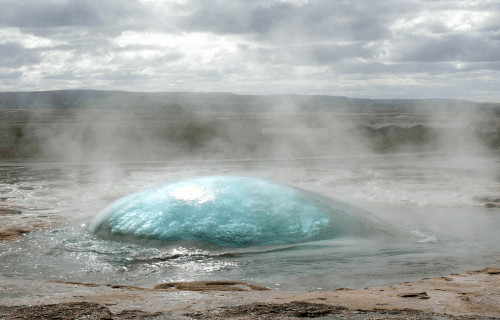
CCL: https://bit.ly/24dGLTK
Strokkur Geyser Physical Description
First of all, the routine eruptions of Strokkur Geyser attain an average height ranging between 49.2-65.6 ft (15-20 m). Yet exceptional occurrences occasionally attain a height of as much as an incredible 131 ft (40 m).
Further, the wondrous site also comprises part of the equally amazing Haukadalur Valley area. There, numerous other fabulous geothermal features also exist. These marvels include fumaroles, mud pools, and other geysers that continue to be located around it.
Furthermore, shortly before the eruptions, the pool of hot water routinely fills and then pulses up and down rhythmically. Following this fascinating action, a large bubble rapidly forms, and then the violent eruption spews forth, quite dramatically.
Strokkur Geyser Location and History
Most notably, geological evidence indicates that Strokkur Geyser initially formed roughly 1,000 years ago. This formation occurred due to the unique actions of an earthquake in an especially geologically active region of Europe.
Further, the area this true wonder of Nature formed in now constitutes the country of Iceland. This truly fantastic area sits beside the equally picturesque Hvita River, located in the southwest portion of the country.
Also worthy of note is the fact that the earliest recorded reports of its activity date back to the year 1294. However, at an uncertain time after this, another quake subsequently deactivated the site.
But, in 1789, yet another quake reactivated it, displaying the awesome power Nature has to change the landscape. It also subsequently remained active until 1896 when still another earthquake deactivated it once again.
In 1963 local residents succeeded in unblocking Strokkur Geyser once again, and it has remained active since that time. This constitutes the only recorded instance of human actions intentionally creating or reactivating a geyser.
Plitvice Lakes
Plitvice Lakes Facts
- Our third choice for inclusion among these 7 Spectacular Geological Marvels of Europe is the mind-boggling Plitvice Lakes. With this, Nature proves once again it remains the ultimate artist.
- Most notably, the breathtaking site represents a spectacular close grouping of more than a dozen marvelous lakes. However, despite the great beauty of the site, the natural lakes are quite small.
- Collectively, these incredible bodies of water also form part of the appropriately-named Plitvice Lakes National Park. Further, it itself constitutes a site teeming with much stunning natural beauty.
- In addition, the geological marvel formed in a particularly beautiful, if somewhat remote, section of Europe. There, it quite understandably serves as one of the most popular tourist draws in its region.
- Lastly, although not surprisingly, comes the great honor bestowed upon the site. The astounding natural beauty of this region prompted UNESCO to name the wonder of Nature a World Heritage Site.
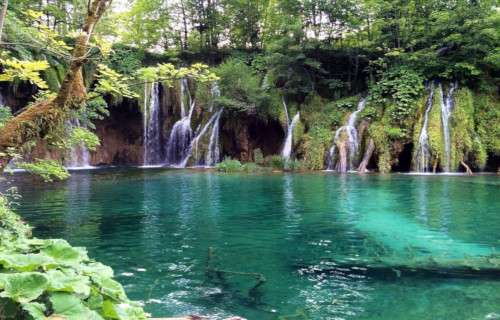
Plitvice Lakes Physical Description
Firstly, the magnificent Plitvice Lakes earns its name, dazzling us with a grand total of 16 small but gorgeous lakes. These, along with the many gorgeous waterfalls also present, dazzle us with extreme beauty.
Secondly, the numerous lakes also descend in a cascade from 2,087 ft (636 m) to 1,650 ft (503 m), over a distance of roughly 5 miles (8 km). On the other hand, these range in average depth from as little as 3.3 ft (1 m) to as much as 154 ft (47 m). Furthermore, they are renowned for their distinctive colors.
The almost kaleidoscopic colors range from azure to green, grey, and also blue. This occurs as the result of varying concentrations of minerals and microorganisms in the water, and changes continuously.
However, all this mind-boggling splendor is contained in a tiny region. That’s because, collectively, this magnificent grouping of small lakes only covers an area of approximately 0.77 sq miles (2 sq km).
Plitvice Lakes Location and Nature
First of all, the mesmerizing natural beauty known as the gorgeous Plitvice Lakes formed in a rather remote region. That often difficult to reach area consists of the portion of Europe now known as Croatia.
Furthermore, these awe-inspiring small bodies of water formed as the result of a unique combination of factors. These consist of the meeting of several small ordinary rivers and subterranean karst rivers.
Incredibly however, all of these special sources of its flow are interconnected. That’s due to the fact that they follow the water flow as it wends its way through the naturally formed passages.
Further, most of them remain separated by naturally occuring dams, formed of travertine. This mineral deposited over time through the action of algae, bacteria, and moss over great spans of time.
Finally, this depositing action continually adds additional layers to the natural dams. In fact, this ongoing activity produces growth at the comparatively rapid rate of about 0.4 in (1 cm) per year.
Giants Causeway
Giants Causeway Facts
- This entry in this article on 7 Spectacular Geological Marvels of Europe, the Giants Causeway, is one that continues to fascinate many people. It’s a true work of natural art.
- Firstly, the attention-grabbing term names one of the most remarkable geological feature. Due to its truly incredible nature, and not at all surprisingly, it drew the interest of UNESCO. The organization subsequently declared the location a World Heritage Site in 1986.
- Secondly, the impressive term serves as the name of an incredible conglomeration of roughly 40,000 interlocking basalt columns. These rather surprising features actually occurred naturally. In fact, they formed due to the actions of an ancient volcanic eruption.
- Furthermore, the upper portions of the numerous columns form a natural stepping stone pattern. Almost as if Nature planned it that way, these lead from the base of a cliff, only to vanish under the sea. There, the astounding formation extends for a short distance before coming to an end.
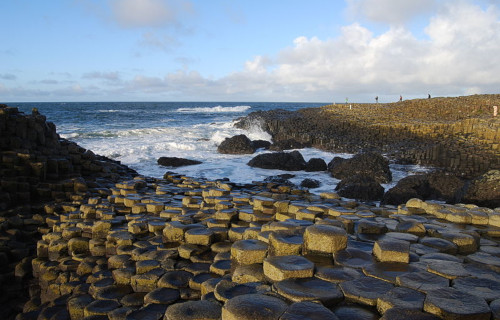
CCL: https://bit.ly/2X153TR
Giants Causeway Physical Description
Perhaps most notably of all, the majority of the columns of the Giants Causeway have a astounding hexagonal shape. However, some of the fabulous natural columns possess four, five, seven, or, for a few, even eight sides.
In addition, the various columns also range in total height. This only serves to add to the distinctiveness of the formation. But amazingly, the tallest of the many columns measures roughly an astounding 39 ft (12 m) in height.
Yet, as mesmerizing as the columns themselves are, they do not represent the only impressive feature of the site. That’s because the solidified lava flow in the cliffs, from which these formed long ago, measures nearly an astounding 92 ft (28 m) thick in some areas.
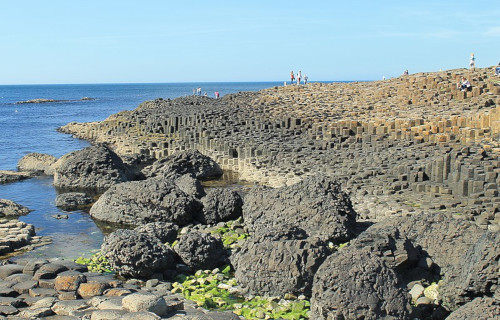
CCL: https://bit.ly/34Rh1T1
Giants Causeway Location, Formation, and Geology
Specifically, the truly quite remarkable Giants Causeway lies situated on the northeastern coast of Northern Ireland, in Europe. As a result of its unique nature, Ireland subsequently declared the site a National Nature Reserve, in 1987.
Furthermore, the unique geology of the Giants Causeway originally formed during the Paleogene Period. This action occurred between 50-60 million years ago. In this distant time, the region routinely experienced rather intense volcanic activity.
As a result of great pressure, molten lava protruded through extensive chalk beds. This action then formed a large plateau of lava. As it cooled, contraction then occurred. This process was similar to what occurs in drying mud, and the contraction occurred in both a horizontal and a vertical manner.
This lengthy process created countless fractures, creating the pillars of the Giants Causeway. The size of the individual columns depended on the speed at which the lava in that particular spot cooled.
Subsequent erosion then formed numerous unique structures. Some of these also possess names based on their supposed resemblance to other objects, with two notables being the Giants Boot and the Chimney Stacks.
Neptune’s Grotto
Neptune’s Grotto Facts
- The fifth location among our selections of 7 Spectacular Geological Marvels of Europe is the dazzling Neptune’s Grotto.
- While not the only sea cave in the area, most consider it to be by far the most beautiful. Its discovery occurred accidentally in the 18th century, by local fishermen. Yet evidence indicates that primitive man knew of the existence of this geological marvel, as well as others locally.
- The cave opening itself formed at the base of extremely steep and rugged cliffs. Yet that opening to the grotto sits only slightly more than 3 ft (1 m) above sea level. Therefore, the cave can only be safely accessed during periods of calm wave activity. Further, it can be accessed by boat (at times) or a stairway carved into the cliff face itself.
- This beautiful grotto was also once used as a habitat for the Mediterranean Monk Seal. Sadly, however, that species now faces extinction and no longer inhabits the region. As a result of its natural beauty, it now serves as an extremely popular destination for tourists visiting the area.
Neptune’s Grotto Physical Description
First of all, the mesmerizing Neptune’s Grotto serves as a classic example of what makes sea caves beautiful and fascinating.
The grotto itself actually extends more than 2.5 mi (4 km ) in length. Inside, a vast array of both stalactites and stalagmites greet visitors with their beauty. Several passages of varying lengths and height exist within the cave system.
Additionally, a comparatively large saltwater lake resides within the grotto. Additionally, this surprising lake measures roughly 394 ft (120 m) in length. It also sits at sea level. The depth varies, but averages about 29.5 ft (9 m).
It also has a maximum width of 82 ft (25 m). A regular influx of seawater via wave activity maintains the shallow lake. Adding to the distinctive beauty of the location, a large stalagmite protrudes from the approximate center of the lake.
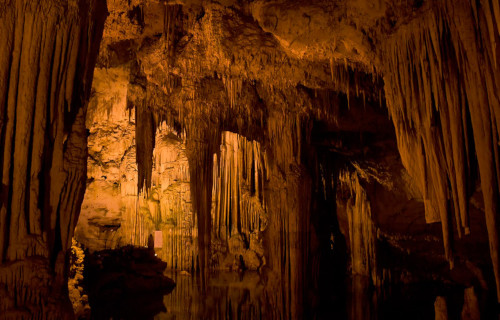
CCL: https://bit.ly/32AA2aF
Neptune’s Grotto Location, Formation, and History
Perhaps most notably, the magnificent Neptune’s Grotto formed in a region itself considered quite picturesque. That’s because the natural wonder formed on the beautiful island of Sardinia, in Italy, in Europe.
The surrounding limestone cliffs tower an impressive 360 ft (110 m) and contain several other sea caves as well. Since these cliffs formed during the Cretaceous Period, the sea has had time to carve out the cave system. Evidence indicates that the caves and grottoes have existed as we now know them for roughly two million years.
Since its rediscovery in the 18th century, it has also, and quite rightly, gained fame for its natural beauty. Today, an impressive tens of thousands of tourists visit the stunning location annually.
Yet access to the full extent of the grotto and cave system remains limited to only certified speleologists, for its preservation. Finally, the site was also used in 1978 to film a science fiction movie, entitled Island of the Fishmen.
Fingal’s Cave
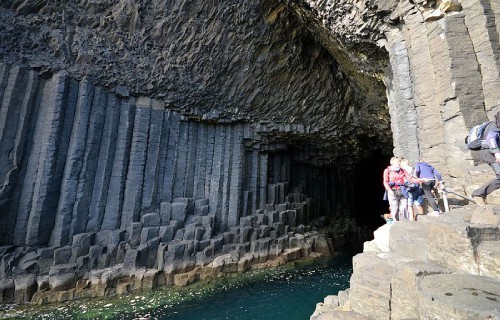
CCL: https://bit.ly/1SrbRBk
Fingal’s Cave Facts
- Listing next out of our choices of 7 Spectacular Geological Marvels of Europe, with its undeniably ethereal ambiance, is Fingal’s Cave. So great is its allure that several movies have featured the location.
- Most notably, the incredibly stunning cave represents a true natural wonder. Furthermore, the magnificent site perfectly exemplifies the aura of mystery and magic so frequently associated with Scotland. In addition, the seemingly magical site also remains a marvel of geology.
- Firstly, the awesome wonder of Nature formed as a mind-boggling sea-cave. This formation occurred on the uninhabited island known as Staffs (Staffordshire). This somewhat isolated location, itself a beautiful site, also forms part of the Inner Hebrides.
- Additionally, the amazing Fingal’s Cave formed entirely from jointed hexagonal basalt columns. The remarkable feature also perpetually remains partially filled by the sea. Finally, the amazingly unique structure of the columns also formed long ago as a result of rapidly cooling lava flows.
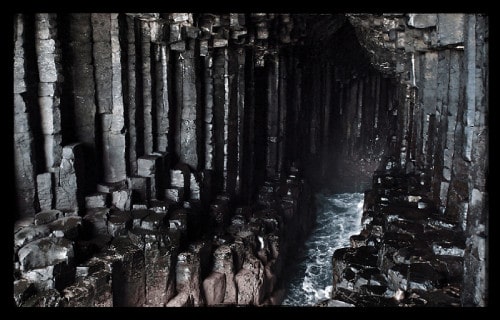
Fingal’s Cave Physical Description
Firstly, the dazzling Fingal’s Cave possesses a rather large arched entrance, relative to its other dimensions. However, this is also followed immediately by a much narrower passage into the rest of the chamber. This comparatively large entrance also measures a truly impressive 66 ft ( 20 m) in height.
Yet, its astonishing entrance does not represent the only remarkable feature to be found there. That’s because the ethereal natural cave itself has a width measuring about 40 ft (12 m). In addition, the floor of the cave continually remains covered in water to a depth of roughly 25 ft (7.6 m).
Due to its dimensions, the marvel of Nature creates an almost unbelievable effect. That holds true because the echoes produced by the waves create a cathedral effect. Furthermore, this natural effect has been described as hauntingly beautiful by numerous visitors who have experienced it.
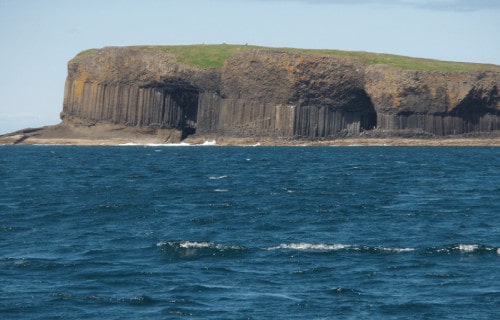
CCL: https://bit.ly/1LbNXU7
Fingal’s Cave Formation and History
First of all, the incredible Fingal’s Cave formed entirely from a lava flow during the ancient Paleocene Era. Further, the majority of experts now believe that the same flow that formed the remarkable hexagonal basalt columns here also formed another remarkable feature, the Giants Causeway.
Finally, the uniquely shaped columns formed as the result of cracks that occurred during the cooling process. As these cooled, the cracks gradually extended, and formed the hexagonal columns seen in the cross-section eroded by wave action.
Due to its mesmerizing distinctiveness, many consider it to be among the most memorable sights in Europe. The cave also now forms part of a National Nature Reserve, one that locals named after the hero of an 18th-century poem.
Presently, it remains unclear when local residents first discovered the beautiful cave. However, the location first came to the attention of the English-speaking world after being seen by renowned naturalist Sir Joseph Banks in 1772.
Reynisfjara Beach
Reynisfjara Beach Facts
- Placing last among these 7 Spectacular Geological Marvels of Europe is the amazing Reynisfjara Beach. However, one glance at the images proves that its placement occurs only due to random chance.
- Without a doubt, the incredible Reynisfjara Beach easily ranks as one of the most unusual beaches in the world. Furthermore, this bewilderingly unique, as well as beautiful, beach also remains one of the most isolated known to man.
- But that same isolation also helps this geological wonder to continue to remain relatively pristine. Very few tourists choose to brave the environmental conditions of its location, so tourism stays rather limited.
- We have been there – check out our photo in our OBP Around the World gallery.
- The waves in the area stay extremely powerful and also rather unpredictable. Previously, numerous fatalities occurred at the location among those attempting to swim in the dangerous waters.
- As a result of the unique landscape, the location also features prominently in numerous science fiction and horror movies. Because of its otherworldly feel, filmmakers continue to use the site for filming movies.
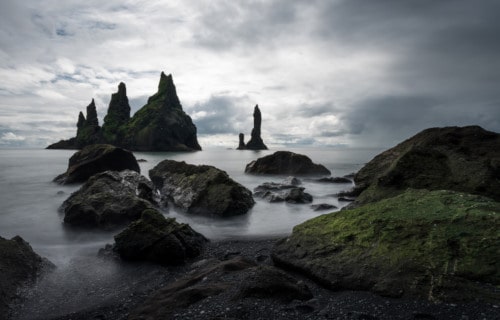
CCL: http://bit.ly/2JszWtI
Reynisfjara Beach Location and Geological Description
First of all, Reynisfjara Beach sits roughly 112 mi (180 km) from Reykjavik, in Iceland, in Europe. Furthermore, it faces the cold, open waters of the northern Atlantic Ocean. This incredible site also stretches for a relatively long distance of about 3.1 mi (5 km).
Most noteworthy, however, remains the surprising fact that the beach actually displays an astonishing black color. That phenomenon understandably occurs due to its composition. That’s because the beach mainly consists of basalt, gradually eroded with the relentless passage of time.
In addition, the location continues to be famous for the presence of incredible stone features just offshore. These constitute black basalt columns known as Reynisdrangar, which began as enormous volcanic boulders.
Since their expulsion from the earth ages ago, relentless erosion occurred due to the action of wind and waves. This constant action subsequently created the incredible shapes found there today.
Reynisfjara Beach Climate and Ecology
Most notably, the climatic conditions at Reynisfjara Beach remain extreme, and often quite unpredictable. As a result, this usually serves as enough to dissuade investigation by all but the most ardent beach fans, but not always.
In addition to its other remarkable features and conditions, it also rains at the beach an astounding average of 340 days per year. This incredible pattern of weather results in making it the wettest place in Iceland.
One magazine also named the location one of the 10 most outstanding non-tropical beaches on earth, in 1991. This honor was bestowed despite (or perhaps as a result of) these incredible conditions.
Finally, and quite surprisingly, rather than being devoid of wildlife, the location teems with a variety of birds. These include fulmars, guillemots, and puffins, showcasing the extraordinary adaptability of Nature.
We truly hope that you have enjoyed this articles on 7 Spectacular Geological Marvels of Europe. But we remind you that these represent only the smallest fraction of the natural beauty waiting to be discovered there. However, like virtually every other location in the world, they need our protection. Let us do all that we can to preserve them for our posterity.
Check out our other articles on 7 Wondrous Wasps Worldwide, 5 Phenomenal Sea Turtles, 8 South American Geological Marvels, 4 Genuinely Gorgeous Grasshoppers

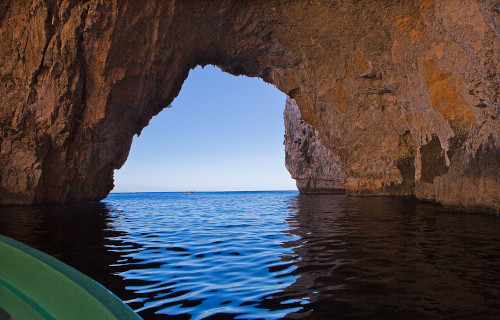
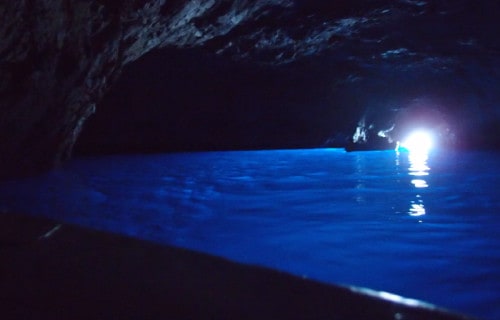

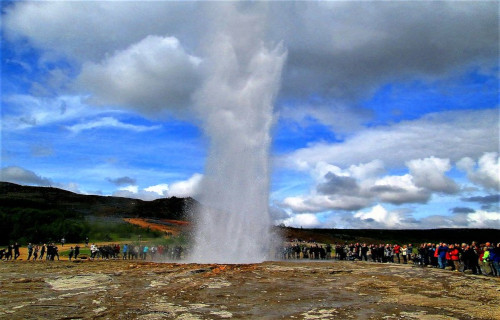
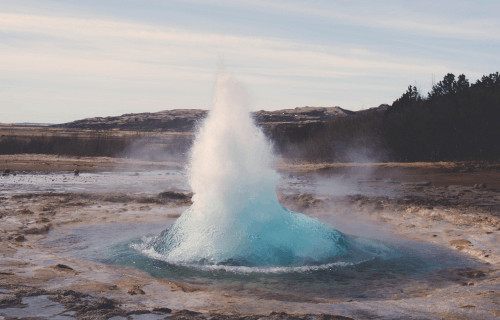
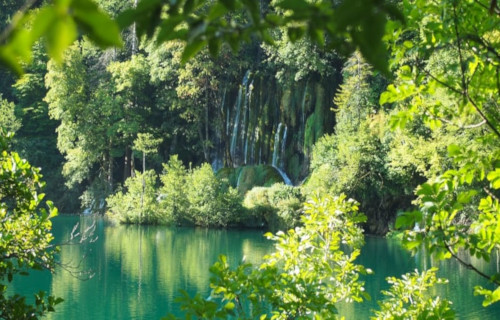
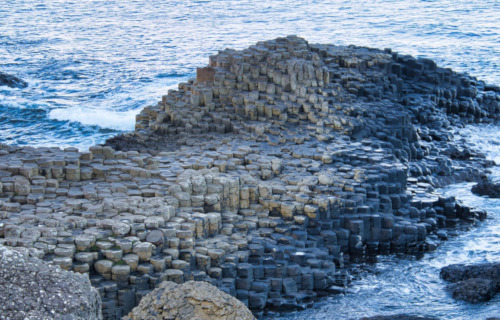
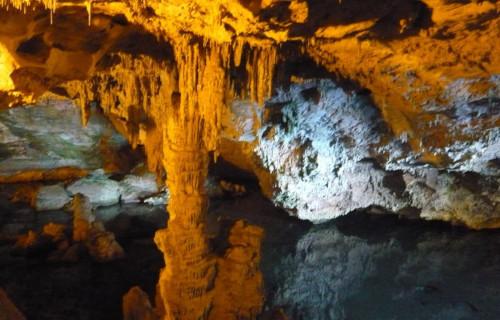
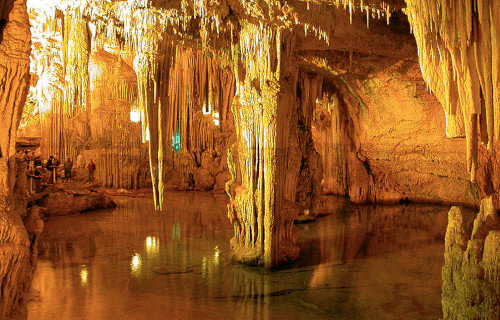
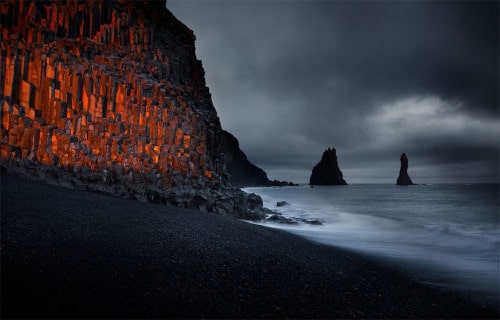
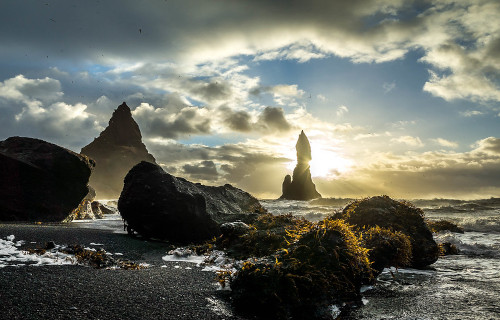









Leave a Reply